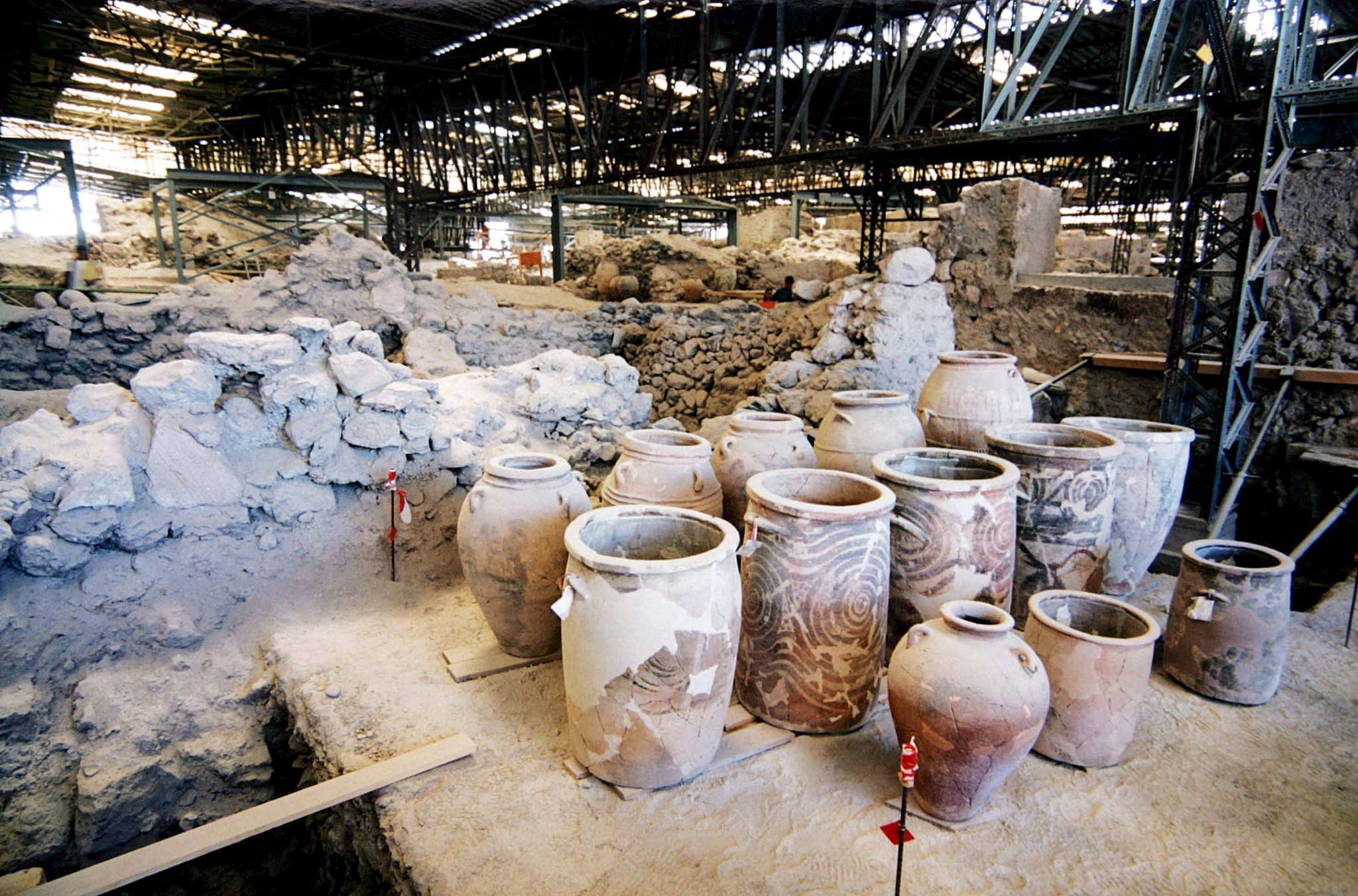
For many, Santorini (officially Thira) is the epitome of a dream destination, a place worth enduring long flights and travel hours to reach. For others, it’s the perfect romantic escape or a favorite stop on a Mediterranean cruise. Yet for history enthusiasts, and those captivated by volcanoes and geology, this Cycladic island is a treasure trove of discovery and adventure through time.
Following a week of escalating seismic activity, which reached its peak with the strongest tremor registering at 5.0 on the Richter scale this Tuesday, Santorini — once celebrated worldwide for its breathtaking beauty — is now in the spotlight for a different reason. As thousands of residents are seen queuing at ticket desks to flee the island, these images have shifted the narrative from a dream destination to one grappling with nature’s powerful forces.
While Santorini’s volcanic nature continues to shape its landscape, it has also granted the island an extraordinary history and cultural legacy. Its ancient ruins, striking frescoes and architectural wonders tell a timeless story of resilience, creativity, and the enduring spirit of its people.
Akrotiri: The Prehistoric City of Santorini
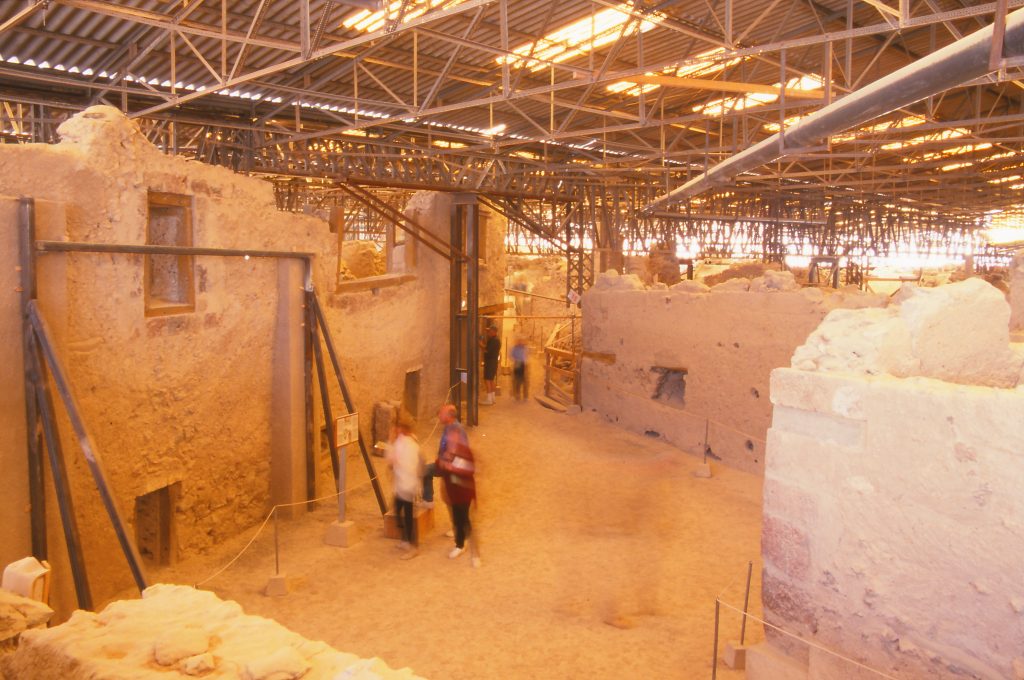
A view down onto Triangle Square in front of the West House in Akrotiri, Greece. Taken on 16 May 2001, 4 years before the 23 September 2005 roof collapse./By Vancouvermike – Own work, CC BY-SA 4.0.
Named after the nearby village, Akrotiri is one of the most significant archaeological sites on the island, dating back to the Cycladic Bronze Age. It stands as a must-visit destination for history seekers from all over the world.
Human habitation at Akrotiri dates back to the late Neolithic period (at least the 4th millennium BCE), when it was a small fishing and farming village. By the end of the 3rd millennium BCE, the city had expanded significantly. Evidence of foreign pottery and imported goods found within its sophisticated, multi-storied buildings suggests that Akrotiri had become one of the leading ports of the Aegean. Its strategic position along the key sailing routes between Cyprus, Minoan Crete, the Greek mainland, the Dodecanese, Syria, and Egypt enabled the city to develop a far-reaching network of external relations.
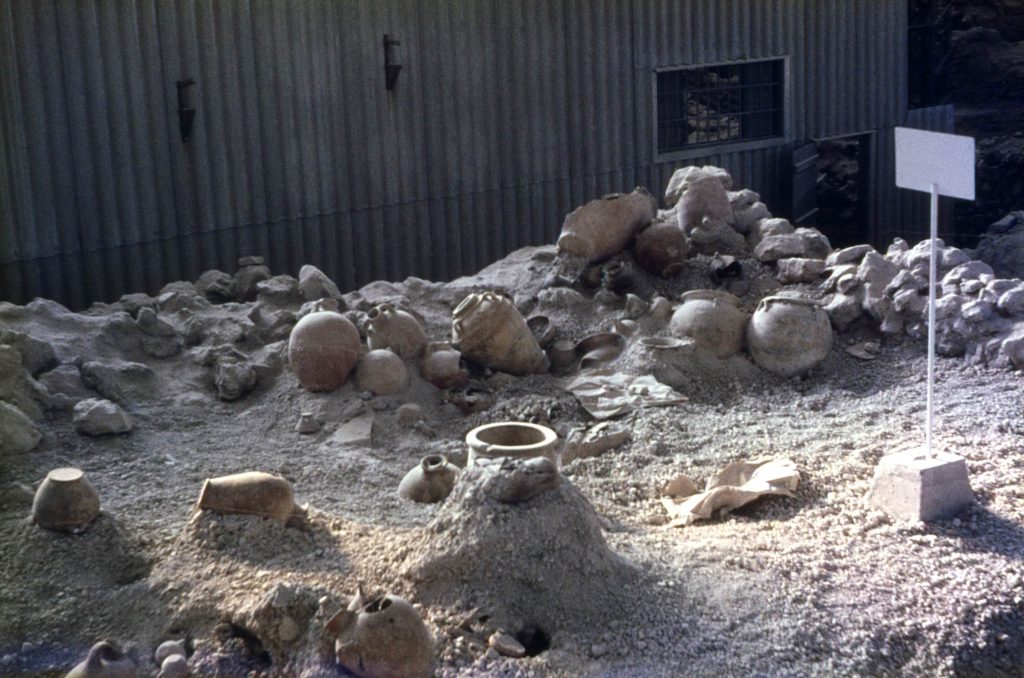
Moreover, the discovery of magnificent wall paintings, furniture, and vessels speaks to Akrotiri’s role as a vibrant urban center. Artifacts such as molds and crucibles suggest that it was also an important hub for copper processing.
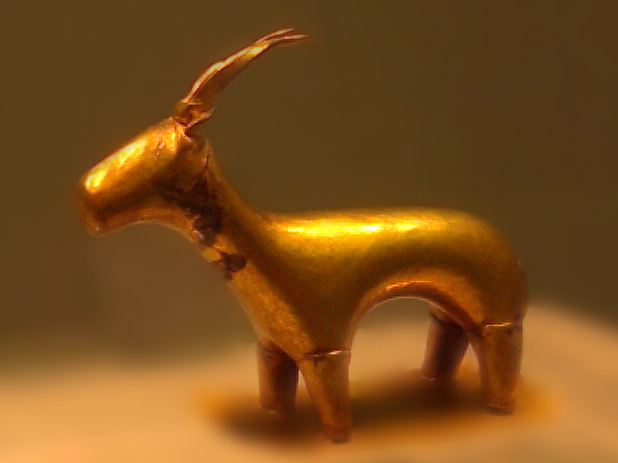
A small golden statue depicting a goat, found during excavation of Akrotiri (Santorini), Greece.
By Nadia Prigoda from Toronto, Canada – Flickr, CC BY 2.0,
At its peak, approximately 30,000 people lived in multi-story, earthquake-resistant buildings, each with its own sophisticated sewage system. Their diet consisted of wine, oil, fruits, fish paste, and grilled meats.
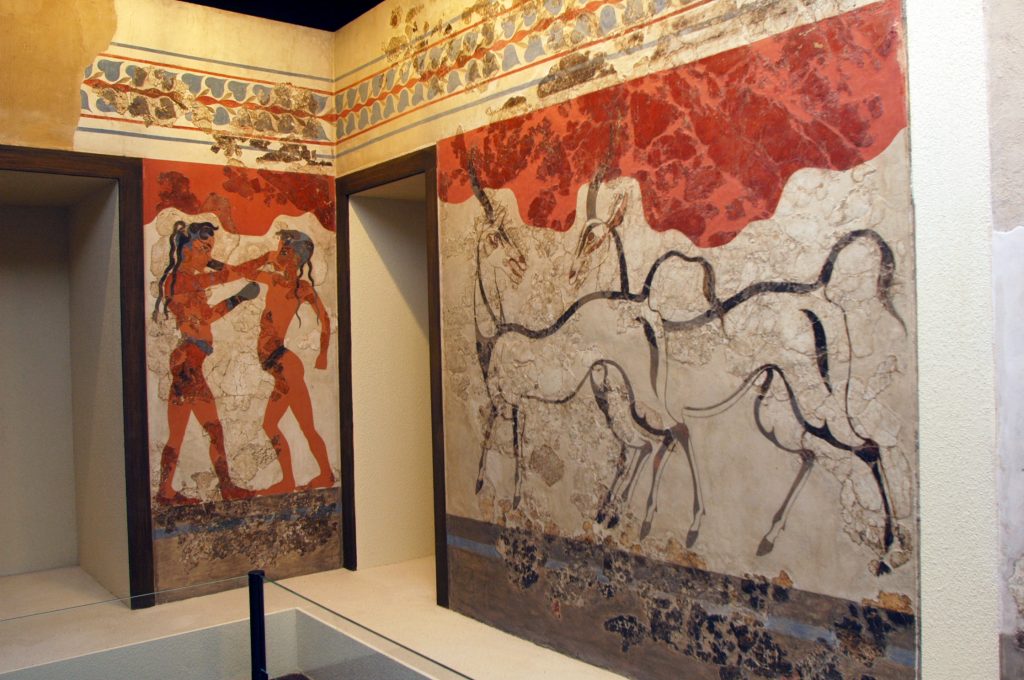
Akrotiri wall paintings knows as frescoes.
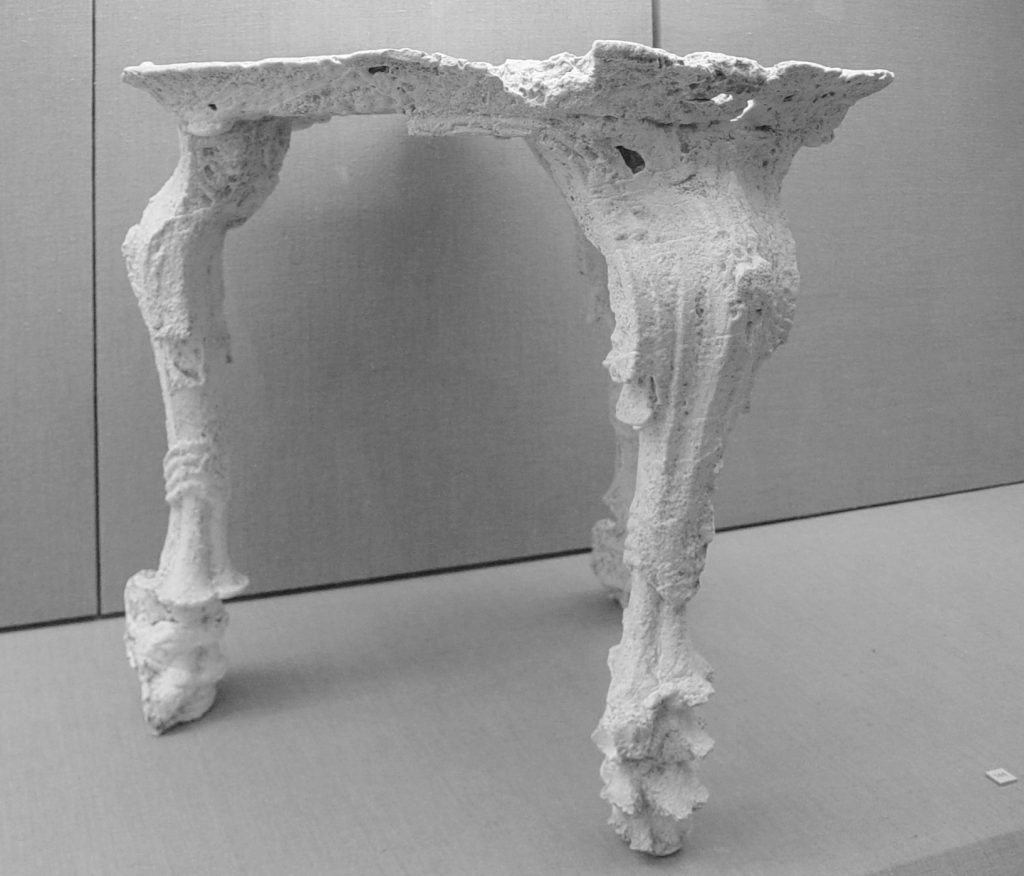
Cycladic (2200-1700 BCE) volcanic ash cavity cast of a carved wooden table, from an excavation on Santorini.
This prosperity came to an abrupt halt during the cataclysmic volcanic eruption of the 16th century BCE. However, it is believed that many of the inhabitants managed to escape. The absence of human skeletons in the ruins indicates that a series of warning earthquakes prompted the population to evacuate in time. Experts estimate that there were several days between the final earthquake and the eruption itself.
Greek archaeologist Spyridon Marinatos, best known for his excavations at Akrotiri beginning in 1967, famously theorized that the eruption of Thera also contributed to the destruction of the Minoan civilization on Crete.
Much like the Roman ruins of Pompeii, Akrotiri’s prehistoric settlement, covered by volcanic ash, has been remarkably preserved offering today a rare glimpse into life during this ancient era.

Fresco with cows from Building B of the prehistoric settlement of Akrotiri, Santorini. Museum of Prehistoric Thera, Fira, Santorini./ KlearchosKapoutsis Wikimedia Commons.
Three-Story Houses and Stunning Wall Paintings
Among Akrotiri’s most remarkable features are its three-story buildings. The ground floors were used for storage, workshops, or mills, while the upper levels served as the living quarters. These homes also featured advanced drainage systems, showcasing the sophisticated engineering techniques of the time.
The wealthier homes were decorated with exquisite frescoes — murals painted directly onto wet lime plaster. These stunningly preserved paintings provide invaluable insight into daily life in the settlement, as well as into the art and culture of the Aegean.
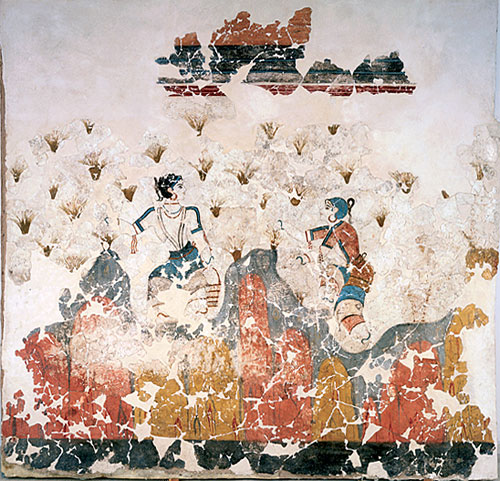
A fresco depicting women collecting saffron, from the bronze age excavations in Akrotiri on the greek island of Santorini, Greece.
Akrotiri, Public domain, via Wikimedia Commons
Though the Minoan civilization of Crete and the Cycladic culture of Thera were distinct, the frescoes are regarded as part of Minoan art. Most of these paintings are now housed in the Prehistoric Museum of Thera on Santorini and the National Archaeological Museum of Athens.
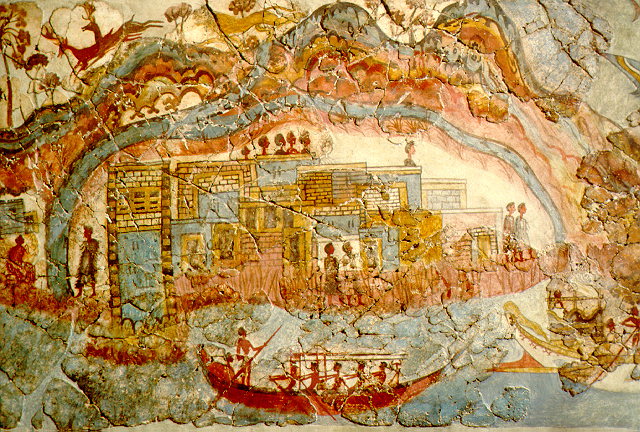
Ship Procession Fresco, Akrotiri, Thera.
Public Domain, Wikimedia Commons.
Ancient Thera: From Doric Settlement to Roman Province
After the destruction of Akrotiri, Santorini remained largely uninhabited until the 8th century B.C., with few exceptions. The Classical city of Ancient Thera was founded atop the island’s highest peak (369 meters above sea level), on a limestone hill called “Mesa Vouno.” Established in the 9th century B.C. by Doric colonists from Sparta, the city became the island’s urban center under the reign of the mythical king, Theras, after whom the island is named.
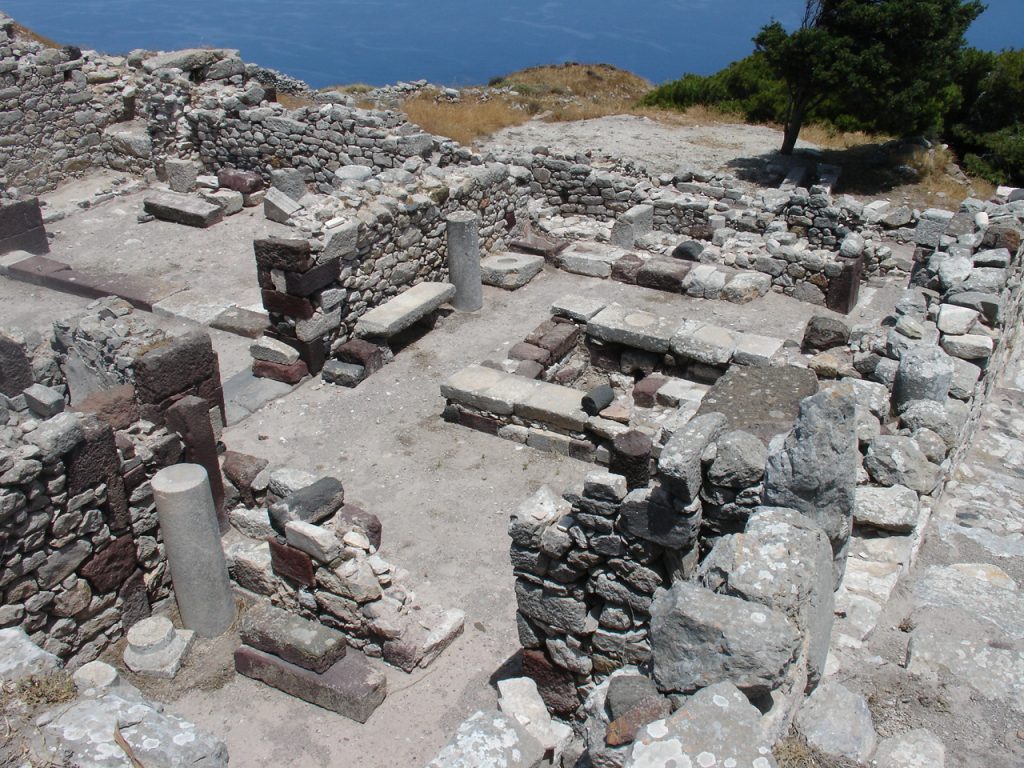
Housing ruins in Ancient Thera.
Strategically located on a rocky ridge, Ancient Thera offered a commanding view of the surrounding area. By the 3rd century B.C., Ptolemaic soldiers had settled in the city, and by the mid-1st century B.C., Santorini and Ancient Thera became part of the Roman province of Asia. The city remained inhabited through the early Byzantine period.
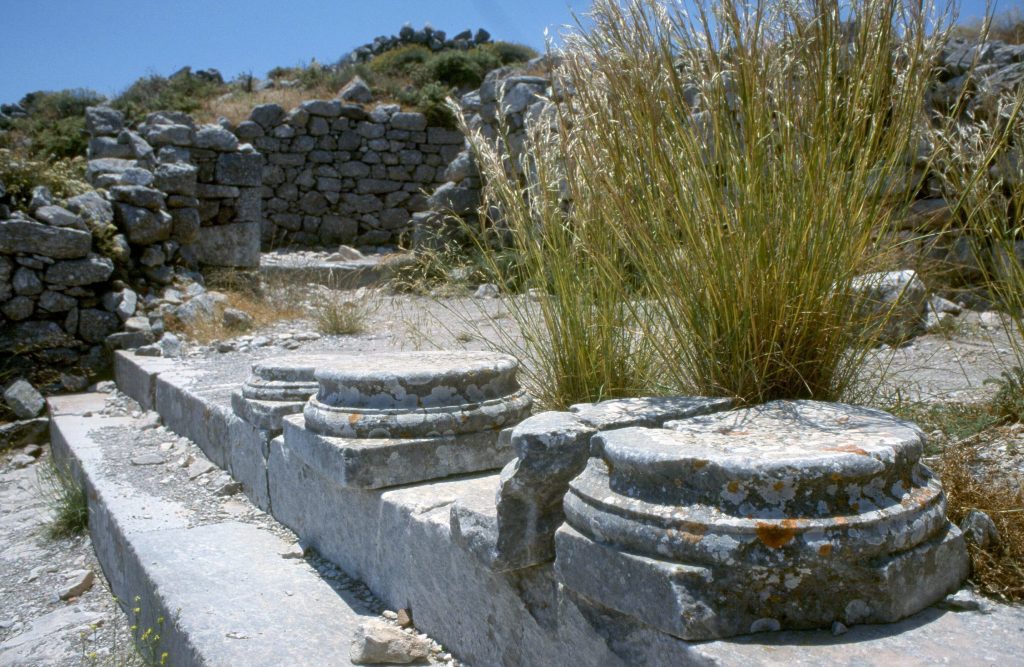
Ruins of a porticus from the 1st century AD in ancient Thera on the greek island Santorini.
By No machine-readable author provided. H-stt assumed (based on copyright claims). – No machine-readable source provided. Own work assumed (based on copyright claims)., CC BY-SA 3.0,
Visitors to Ancient Thera can explore a variety of well-preserved ruins, including the Agora (marketplace) with the Basilike Stoa (Royal Portico), the city’s theater (which was also used for public assemblies), a sacred area dedicated to Hermes and Heracles, and the Temple of Apollo Karneios, which dominated the religious life of the inhabitants. Other significant sites include the Gymnasium of the Ephebes and a sanctuary dedicated to ancient Egyptian gods.
At the entrance to the settlement, the shrine of Artemidoros, a priest from Pergi in Asia Minor, stands as a testament to the role of dreams and divine guidance in the ancient world. Artemidoros founded the shrine and became a benefactor of the city, and his symbols are still visible on the rocks today.
Source: tovima.com
Latest News
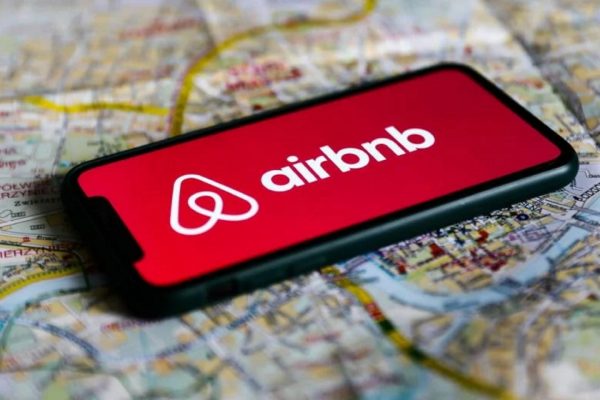
Airbnb: Greece’s Short-Term Rentals Dip in March Amid Easter Shift
Data from analytics firm AirDNA shows that average occupancy for short-term rentals dropped to 45% in March, down from 49% the same month last year.

Easter Week in Greece: Holy Friday in Orthodoxy Today
At the Vespers service on Friday evening the image of Christ is removed from the Cross and wrapped in a white cloth

Meloni and Trump Meet in Washington, Vow to Strengthen Western Ties
“I am 100% sure there will be no problems reaching a deal on tariffs with the EU—none whatsoever,” Trump stressed.
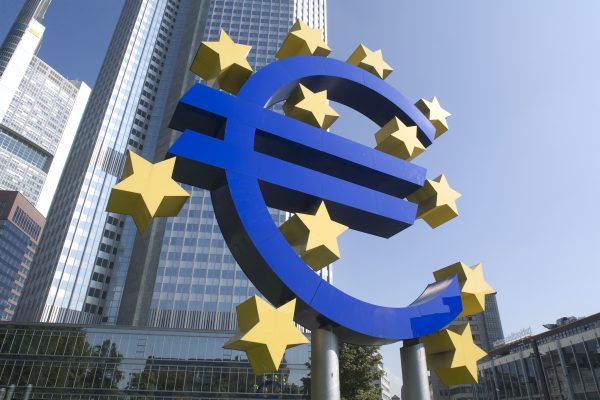
ECB Cuts Interest Rates by 25 Basis Points in Expected Move
The ECB’s Governing Council opted to lower the deposit facility rate—the benchmark for signaling monetary policy direction—citing an updated assessment of inflation prospects, the dynamics of underlying inflation, and the strength of monetary policy transmission.

Current Account Deficit Fell by €573.2ml Feb. 2025: BoG
The improvement of Greece’s current account was mainly attributed to a more robust balance of goods and, to a lesser extent, an improved primary income account

Hellenic Food Authority Issues Food Safety Tips for Easter
Food safety tips on how to make sure your lamb has been properly inspected and your eggs stay fresh.
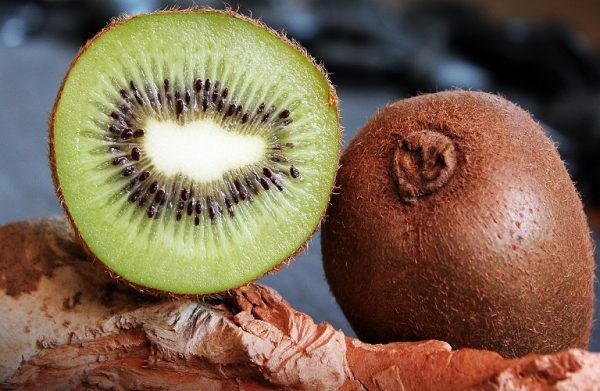
Greek Kiwifruit Exports Smash 200,000-Ton Mark, Setting New Record
According to data by the Association of Greek Fruit, Vegetable and Juice Exporters, Incofruit Hellas, between September 1, 2024, and April 17, 2025, kiwifruit exports increased by 14.2%.

Easter Tourism Boom: Greece Sees 18.3% Surge in Hotel Bookings
Among foreign markets, Israel has emerged as the biggest growth driver, with hotel bookings more than doubling—up 178.5% year-on-year.
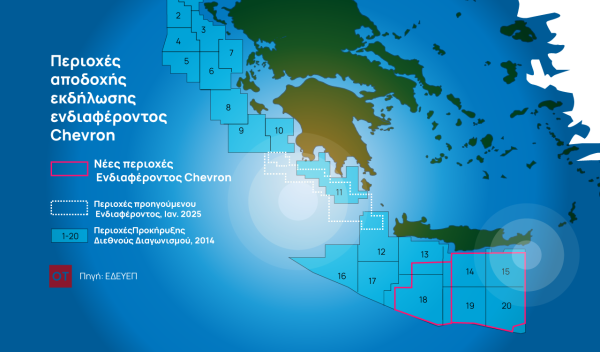
Greece to Launch Fast-Track Tender for Offshore Hydrocarbon Exploration
Last week, Papastavrou signed the acceptance of interest for the two Cretan blocks, while similar decisions regarding the two Ionian Sea blocks were signed by his predecessor

American-Hellenic Chamber of Commerce to Open Washington D.C. Branch
AmCham's new office aims aims to deepen U.S.-Greece economic ties and promote investment and innovation between the two countries







![Πλημμύρες: Σημειώθηκαν σε επίπεδα ρεκόρ στην Ευρώπη το 2024 [γράφημα]](https://www.ot.gr/wp-content/uploads/2025/04/FLOOD_HUNGRY-90x90.jpg)




![Airbnb: Πτωτικά κινήθηκε η ζήτηση τον Μάρτιο – Τι δείχνουν τα στοιχεία [γράφημα]](https://www.ot.gr/wp-content/uploads/2024/07/airbnb-gba8e58468_1280-1-90x90.jpg)












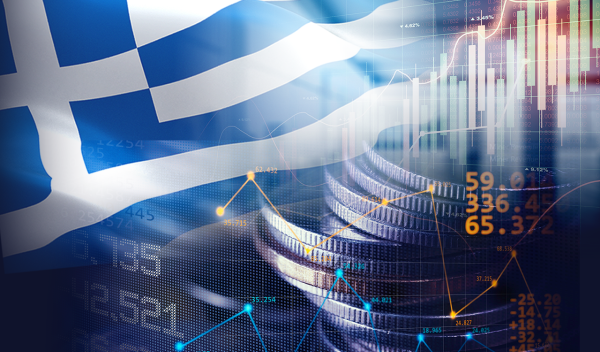








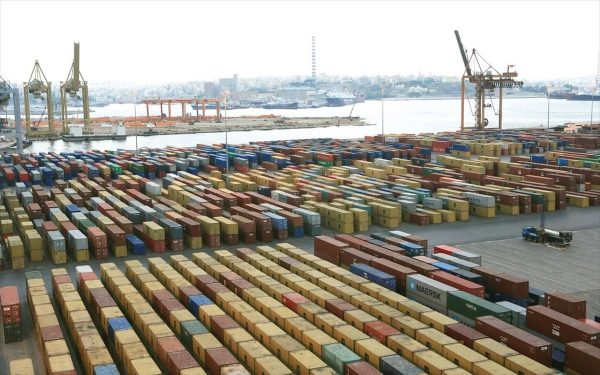



![Airbnb: Πτωτικά κινήθηκε η ζήτηση τον Μάρτιο – Τι δείχνουν τα στοιχεία [γράφημα]](https://www.ot.gr/wp-content/uploads/2024/07/airbnb-gba8e58468_1280-1-600x500.jpg)


 Αριθμός Πιστοποίησης
Αριθμός Πιστοποίησης